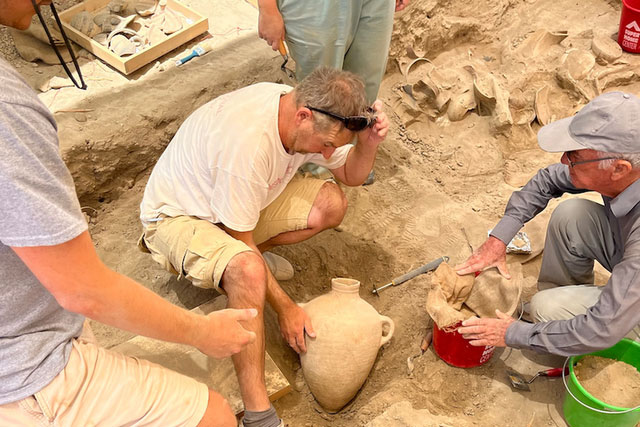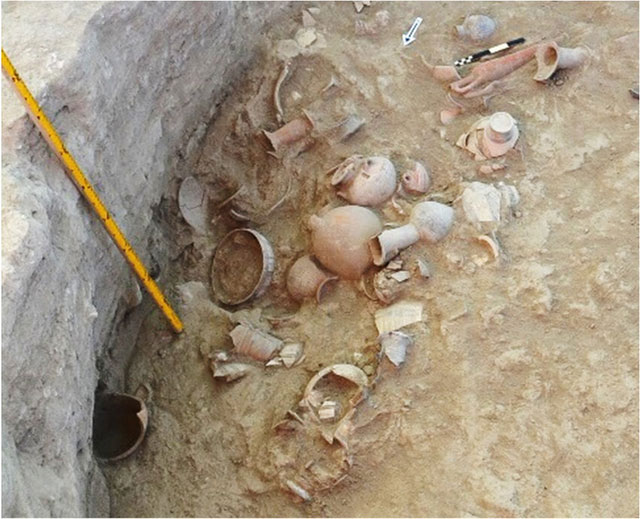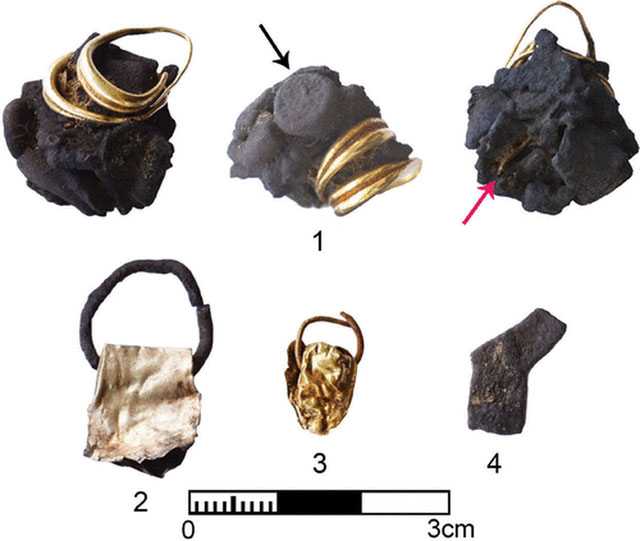Thanks to a strange magnetic field, archaeologists have found a tomb filled with gold and precious stones…
In 2022, a team of archaeologists from the University of Gent (UGent) and the Mediterranean Archaeological Society used a magnetometer to conduct a geographical survey near the city of Dromolaxia Vizatzia at Hala Sultan Tekke on the south coast. Southeast of Cyprus, a strange thing happened. They discovered a strange type of anomalous magnetic field. This activity was part of an exploration program that started in 2014 by a group of experts on a large hill near Pyla village.
In the area with the strange magnetic field, they dug and found many graves dating from about 1500 to 1300 BC. During that period, the city of Dromolaxia Vizatzia was a center of copper trade. After inspection, experts said these were the “richest” tombs they had ever dug in the Mediterranean region .

 Following traces of anomalous magnetic fields, archaeologists have found many tombs. (Photo: Heritagedaily).
Following traces of anomalous magnetic fields, archaeologists have found many tombs. (Photo: Heritagedaily).
According to Professor Peter Fishcher from the University of Gothenburg: “We think that these tombs belong to the royal family.”
After opening the tomb cluster, inside there are two burial chambers with dimensions of 4x5m, connected to each other, accessible through a narrow passage leading to the ground. They unearthed more than 500 treasures including gold, precious stones, ivory, high-quality ceramics and some bronze weapons. The ingredients to make these antiques were imported from neighboring civilizations. For example, gold and ivory were imported from Egypt, precious stones from Afghanistan, India and Sinai, and amber was brought from the Baltic region.
Around the skeletons, archaeologists also found crowns, necklaces, pendants, bronze mirrors and dozens of ceramic vases. These items were probably produced in Egypt during the 18th dynasty during the time of Pharaohs such as Thutmos III and Amenophis IV (Akhenaten) and his wife Nefertiti.

 Many precious gold treasures, gems, and ceramics were found in the tombs. (Photo: Heritagedaily)
Many precious gold treasures, gems, and ceramics were found in the tombs. (Photo: Heritagedaily)
Documentation about ancient dynasties in the area is still limited, so scientists still cannot determine whether the above tombs belong to royal families or not. Researchers will conduct analysis. DNA analysis and strontium isotope ratio in bones to learn more about the people buried in the grave and their origins.
In previous surveys since 2014, this group of experts has found many valuable antiques. Most notable is an item shaped like an “egg” . After opening, inside is a gold plate weighing 472 grams. This disc is currently on display at the Larnaka Museum.
On another occasion, the archaeological team found a large plaster vase, painted with lotus flowers, filled with bronze, ivory and stone jewelry. This vase appears to be of Egyptian origin.
These findings demonstrate the scale of trade in the Mediterranean region during the Late Bronze Age that took place very strongly between cultures in the region.





